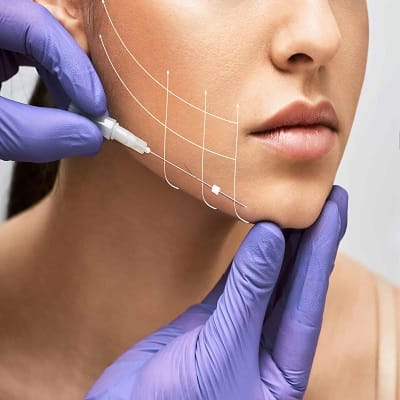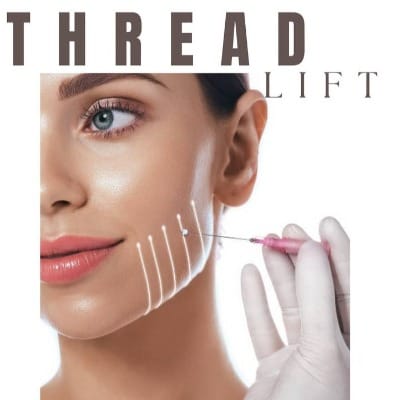
Thread lifts in Islamabad have become attractive because it is a surgical procedure that aims to pull up and firm loose facial skin. The effects are visible instantly, recovery is very fast and the treatment is much cheaper as compared to a standard facelift. Yet, most people ask how many times they can have a thread lift on their face.
In this blog, we will discuss the things that you need to know about thread lift. What is the limit for undergoing this treatment, and what are the consequences of having the treatment performed more than once?
What is a Thread Lift?
The surgeon uses polyglycolic acid sutures (threads) in a minimally invasive cosmetic surgery called a thread lift to lift and smooth the face. Bioabsorbable substances such as polydioxanone (PDO), poly-lactic acid (PLA), and polycaprolactone (PCA) are typically used to prepare such threads.
Further, the threads activate the body’s own healing mechanisms therefore encouraging collagen production. In this way, it contributes to the tightening of the skin and also the improvement of elasticity in the subsequent years.
Thread lifts are commonly performed in the following areas:
- Jawline and neck
- Cheeks and mid-face
- Brow and forehead
How Long Do Thread Lift Results Last?
The longevity of thread lift results can be significantly based on several factors which include; the type of threads the dermatologist used, the patient’s skin type, and age. This can last from twelve to eighteen months on average. Some threads disappear in less than six months but the other continue to offer a lifting result as the collagen underlying the threads reinforces the skin. However, thread lifts have a very temporary effect on the skin.
How Many Times Can You Have a Thread Lift?
Generally, a standard is not set for allowing multiple thread lifts on one’s face. So people inquire if they are permitted to have the procedure done multiple times. A person can undergo thread lifts on average every 12-18 months, not exceeding once a year.
Here are some factors that influence how often you can have a thread lift:
Skin Quality and Age
This simply means that young people with firm skin may require few treatments while the elderly with very slack facial skin may require frequent upkeep to retain their new look.
Type of Threads Used
The type of threads inserted during the procedure determines the number of times you may require a thread lift. PDO threads usually disintegrate after six months but they encourage collagen formation for many months even after complete degradation.
Desired Results
Some patients wish to achieve a more natural look. Some patients want a slight lift, while other patients want a more pronounced lifting effect. However, if you want a more significant transformation, it may be possible that further thread lift sessions could be needed but spaced out at some point in time.
Lifestyle and Maintenance
Some of the things that determine the life span of the results of the thread lift include your way of life, the type of foods you take, and your skin care regimen.
A cosmetic surgeon can examine your skin and clarify your needs and desires, then suggest how often you should have a treatment.
What to Expect from Repeated Thread Lift Treatments
- Several people consider thread lifts to be safe.
- Each time you go for the treatment, there might be a slight difference.
- Your skin’s aging or the collagen increase from prior treatments determines how much lifting is needed.
Complications and Reflections over Multiple Thread Lift
While thread lifts are considered minimally invasive with a low risk of complications, having too many procedures within a short period can increase the risk of side effects such as:
- Skin irritation or infection
- Thread migration or breakage
- Cosmetic overdid surgery and rigid results
Final Thoughts:
It is a fast and very safe method that has quickly become popular for lifting sagging skin and making clients look young again. Make sure to consult with the best aesthetic physician or a surgeon. Visit SKN Cosmetics to get advice from our best physicians. They will assess your needs and advise the viability.



